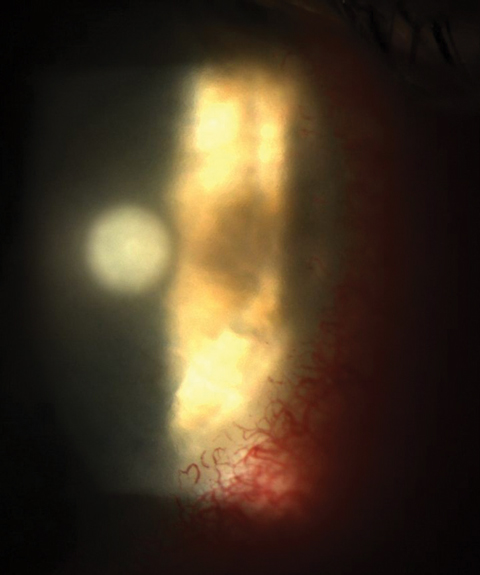 |
|
Not replacing soft contact lenses as directed led to this case of infiltrative keratitis. Education should stress not just the possibility of adverse effects but the individual’s vulnerability as well. Photo: Jeffrey Sonsino, OD. Click image to enlarge. |
Editor’s Note: As part of our “Year in Review” retrospective, we’ve selected the top 30 news stories of the year and are re-sharing them as we close out 2022. Follow along as we count down to number 1!
This story was originally published on December 8, 2022.
No. 1 biggest news story of 2022:
Since the 1950s, a concept called the health belief model has been used in a wide variety of medical fields and populations to explain patterns of health-related behaviors. The premise is that, for a person to take action to improve or maintain their health, they need to believe they are personally susceptible to the disease in question and that it would negatively affect them. In a recent study, researchers used this model to understand the attitudes and beliefs of daily disposable soft contact lens wearers.
A total of 100 daily disposable wearers between ages 18 and 33 were enrolled and asked about demographics, lens wear and various aspects of their beliefs and actions germane to the health belief model. The team found an association between health belief survey scores and education level, overnight lens wear and lens reuse.
Of the study participants, 37% reported sleeping in their contact lenses, which may reflect the wearing habits of a young adult population, or a changing demographic of lens wearers as daily disposable lenses become more widely prescribed, with 25% reporting reusing them.
As the study authors predicted, these lens wearers saw fewer benefits and more barriers to following recommended health actions. But to their surprise, they found that soft lens wearers who reported sleeping in lenses perceived themselves as more susceptible to contact lens–related adverse events.
“This suggests that patients may recognize that certain health behaviors are risky but do not modify their behaviors, conceivably because they do not believe that the consequences of high-risk behavior will individually happen to them,” the authors explained in their paper on the work.
They suggested that providers consider the permeability of the lenses they are prescribing for their daily disposable patients, as well as the potential for corneal inflammatory events since many may be sleeping in the lenses.
Although contact lens wear is widely considered to be a safe and effective way to manage refractive error, the authors noted that adverse events still occur and are more likely with improper use. Providers should reinforce best practices and “in the context of the health belief model, reinforce the benefits of wearing daily disposable soft contact lenses as prescribed.”
The team concludes by suggesting that the health belief model “allows providers to identify opportunities for patient education and interventions to promote healthy contact lens wear.”
Lutmer KM, Wagner H, Richdale K, et al. Examining daily disposable soft contact lens wearers’ attitudes and beliefs using the Health Belief Model. Ophthalmic Physiol Opt. November 21, 2022. [Epub ahead of print]. |

